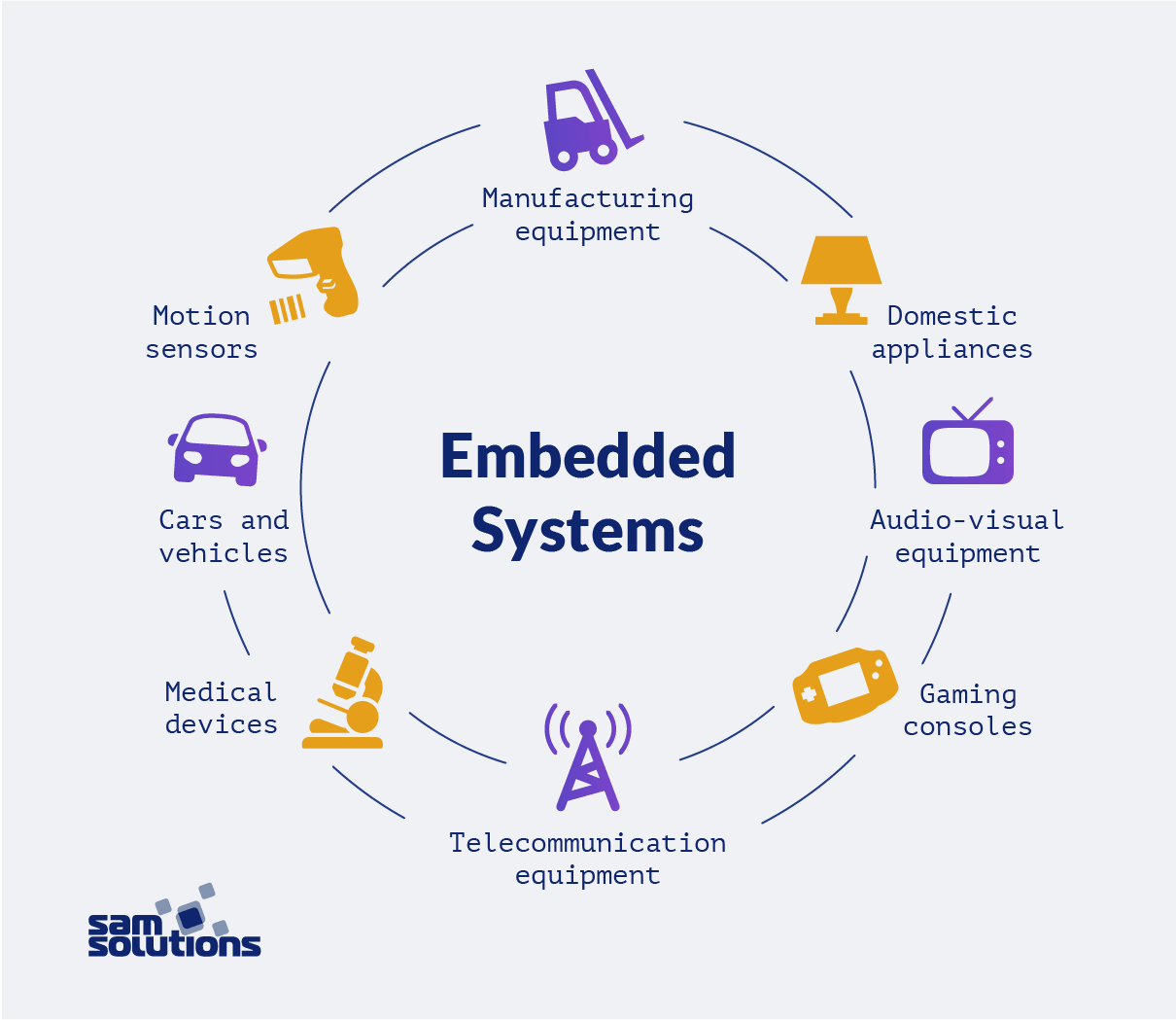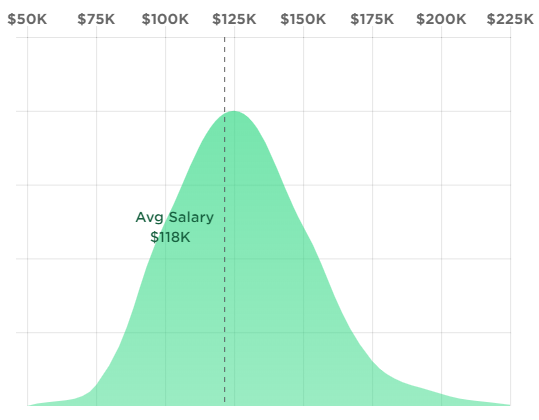EMBEDDED SYSTEMS: A CAREER FOR YOU?
EMBEDDED SYSTEMS:
A CAREER FOR YOU?

Let's take a Quick Introduction:
1. THE VARIETY
There are a variety of career paths for embedded development. To help you narrow your focus, you should first brush up on the required skills, degrees and IT certifications, as well as career options for embedded development. Before we dive in, let’s level set.
You may think the words developer and engineer are interchangeable, but they actually play different roles.
- A developer focuses on creating functional programs – writing and tweaking the code and getting the software or application to work.
- An engineer applies engineering concepts to embedded development, looking at the big picture of how the software and hardware work together. This includes design, development, maintenance, testing and evaluation.

2. What Skills Do I Need to Work in Embedded Development?
Embedded development is a highly paid and competitive field. To get an entry-level or junior-level job in embedded systems, you will need to have some fundamental skills to set you apart from the competition.
To land an entry-level embedded development job, you should be able to do the following:
Embedded development is a highly paid and competitive field. To get an entry-level or junior-level job in embedded systems, you will need to have some fundamental skills to set you apart from the competition.
To land an entry-level embedded development job, you should be able to do the following:
- Design and implement embedded software using C and C++ (or another programming language) Understand interfacing peripherals, compilers, vision control and text editors for writing code.
- Understand assemblers to convert code, libraries, debuggers and simulators.
- Understand embedded hardware systems and electronics schematics.
- Communicate and problem solve
- An embedded engineer must also be able to work efficiently in a team environment, collaborate with other stakeholders and work independently without supervision while making decisions for the company.
- The main task of embedded development is to develop an optimized code for specific hardware platforms.
3. The day-to-day responsibilities and roles include the following:
- Defining specifications
- Implementing software architecture
- Developing software bricks or products
- Ensuring maintenance of the code
- Running test units of modules and taking care of debugging
- Working in collaboration with other team members to ensure the best results
- Reporting on your activity
4. THE MAIN QUESTION: How much will you get PAID?
According to Hired.com, embedded software engineers make an average annual salary of $121,000. But remember, there are a lot of factors at play when it comes to average salaries, including location, industry, organization size and more.

5. How do you start?
Getting experience in other areas of IT first provides a well-rounded background for embedded development. Careers in tech support and computer networking can help you better understand embedded hardware systems and interfacing peripherals. Likewise, helping end users resolve technology issues is a great way to improve your communication and problem-solving skills.
Cybersecurity skills and knowledge also play a role in embedded development. Embedded developers need to make sure the software and applications they’re making are secure and don’t introduce vulnerabilities.
6. Do you need any degree or experience?
To land an embedded development position, it’s helpful to have certain degrees and/or IT certifications to your name. Entry- and junior-level embedded developers may need a bachelor’s degree in computer engineering, software engineering, electronics engineering or computer science. Usually a master’s degree is not required for entry- or junior-level applicants, but may be expected of senior-level professionals.

6.1 Exceptions
Some employers may consider experience – both on-the-job and on your own time – as well as IT certifications as a supplement to, or even in lieu of, a college degree. Developers from Essay Tigers suggest that in the world of embedded systems, personal projects and experiences communicate your expertise to employers’ even better than acquired education.
7. JOB PROFILES YOU MIGHT CATCH AN EYE FOR:
7.1 Microcontroller firmware engineer
In general, an embedded software engineer is a person who is proficient in microcontrollers and writes firmware for microcontrollers.
Microcontroller firmware engineers are often responsible for the following tasks:
- Design and implement embedded software using C and C++
- Design devices, including label printers, medical devices, automobile control parts and game controllers
7.2 Embedded Linux engineer:
An embedded Linux engineer takes care of low-level development activities.
Embedded Linux engineers are often responsible for the following tasks:
- Develop low-layer activities with strong embedded constraints
- Test developed modules
- Run unit tests
7.3 Embedded applications engineer:
Managing applications is a big part of what embedded developers do.
Embedded applications engineers are often responsible for the following tasks:
- Manage embedded software frameworks
- Work on open source stacks and applications
- Work with different programming languages, including Embedded C and Python.
7.4 Embedded network engineer:
Embedded network engineers take care of various network devices like routers, access points, firewalls, network back end infra, bridges and switches.
Embedded networking engineers are often responsible for the following tasks:
- Work on optimization of packet data transfer within a network
- Work on network layers L3, L4-bridging and muxing
- Manage network processors
7.5 Embedded IoT application developer:
With the growth of the internet of things (IoT), embedded IoT application professionals are more relevant and in demand than ever.
Embedded IoT application developers are often responsible for the following tasks:
- Design and implement embedded software using C and C++
- Validate new product solutions compliance to standards
- Use version control, test-driven development, mobbing and other best practices
7.6 Cybersecurity embedded developer:
A cybersecurity embedded developer uses their technical expertise to ensure the safety of embedded software.
Cybersecurity embedded developers are often responsible for the following tasks:
- Design APIs
- Understand hardware security modules, PKI, transport layer security and common application security vulnerabilities
- Test and debug
8. What Embedded Development Career Path Will You Take?
The embedded development career path offers numerous opportunities to take you from entry level to retirement. For example, starting your career as a junior embedded developer allows you the opportunity to move on to become a senior embedded engineer. But you must put in the work. Just like a doctor or a lawyer, an embedded engineer must remain up to date with their specialization to stay savvy when it comes to the latest technologies in the industry.

Great work!!!!
ReplyDeleteWell explained
ReplyDeleteInformative blog
ReplyDeleteWell written
ReplyDeleteVery informative👍
ReplyDeletegreat work !!!
ReplyDeleteGreat information
ReplyDeleteGreat work
ReplyDeleteAmazing
ReplyDeleteFeels informative
ReplyDelete✨✨✨✨
ReplyDeleteMast ekdum
ReplyDeleteEkdum mast
ReplyDeleteThank you for having a detailed analysis on the careers of embedded systems.With having good embedded software development services out there, choosing the career as a embedded engineer or the titles you described in the blog is a good choice according to my perception.
ReplyDeleteThis comment has been removed by the author.
ReplyDelete